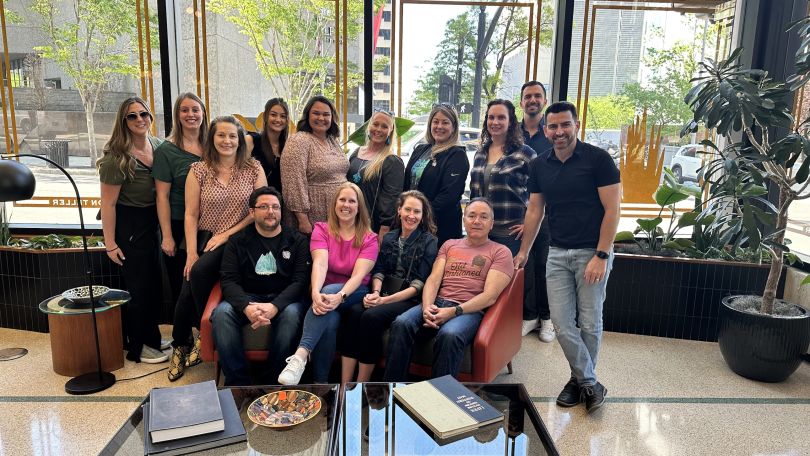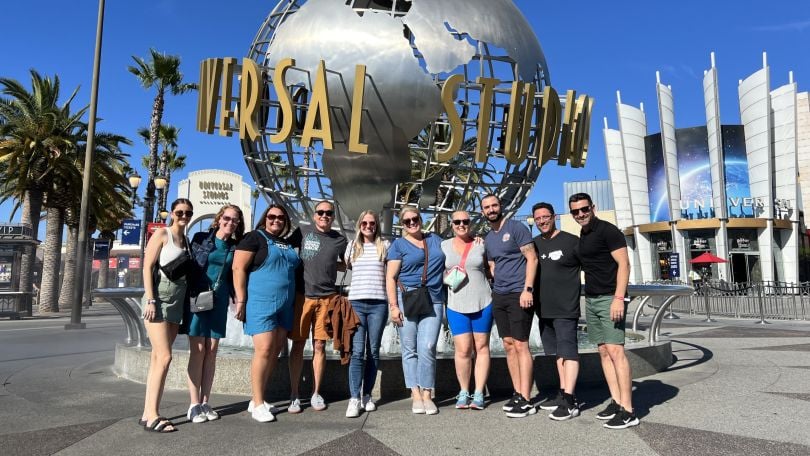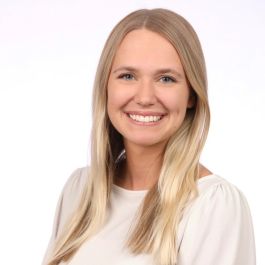If there was a room with 195 people in it — where every person was from a different country around the world — it would be strange if they all acted exactly the same.
One could argue that it would be just as strange for a global company to have the exact same onboarding experience no matter where the employee was joining from.
Instead, adjusting to tailor each onboarding to the location of the new hire is wise. Harvard Business Review conducted a global study with over 12,800 respondents between December 2017 and May 2019 exploring how corporate cultures differ around the world. The result shed a light on workplace values and communication — all vital ingredients in helping a new employee succeed. For example, the article notes that Western European and North American teams emphasize results and achievement, whereas South American teams reflect a propensity toward fun and excitement, and Asian, Australian and New Zealand teams are more likely characterized by interdependence and coordination.
At global cybersecurity company Huntress, Director of Learning and Leadership Development Billy McMillan believes that successful onboarding comes down to helping everyone navigate change.
“Know that when someone comes to your company it represents change, and change is hard,” he shared. “Change creates uncertainty in all aspects of the individual’s life and their whole life impacts how they show up at work. So in the onboarding process, include support for the teammate that will help them effectively handle all the changes that come with joining a new company. The teammate, company and their loved ones will thank you.”
WHAT DOES HUNTRESS DO?
Huntress provides a managed security platform for small and mid-sized businesses. The platform uses automation and human Security Operations Center analysts to help protect businesses from cybersecurity threats.
McMillan emphasized that it’s important to welcome people holistically — “not only by exposing them to all the things the company does and why, but taking time to acknowledge and support them during such a drastic change.”
He continued, “People are coming to Huntress either from a previous company, different role, or a school system where things are known — the names of people who work there, the systems they use, the typical routine of the day. Coming to a new company, all of those ‘knowns’ are now unknown. Even the most excited new teammates can still experience challenges with change, and that’s OK. Our bodies are wired to desire certainty, and it takes some time to get used to the new environment.”
In this time of change for new hires, Huntress has found that a dynamic onboarding experience is best.

What Huntress Onboarding Looks Like
Huntress is on a streak of bringing in new hires. Between 2021 and 2022, the company more than doubled its workforce, becoming a team of almost 300 (only to exceed that milestone with more growth in 2023). The internal growth also brought in a spike in customers — jumping from 25,000 to 100,000 during the same time period.
Onboarding at Huntress is broken down into three phases: preboarding, orientation and onboarding.
“Preboarding includes everything that we do to prepare teammates for their first day at Huntress, from videos exposing them to the culture, the handbook providing a deep dive into what we are about, swag that is always a show stopper and the introductions to your teammates,” explained McMillan.
The orientation stage includes exposing new teammates to all things Huntress, added McMillan. He went on to explain that this includes the Huntress story, why the company exists, a deep dive into the products and how the various departments work together to “support the future of protecting the 99 percent.” It also includes a session on belonging.
The onboarding phase is the traditional portion of being a new hire — where departments and teammates welcome the person into the organization, showing them the tools, processes and ways the company operates.
“We welcome all new hires into our culture of collaboration, belonging and inclusivity,” said People Coordinator Veronica Werve. Part of Werve’s job is to be one of the first points of contact before a new hire’s first day.
Werve introduces herself as their onboarding coordinator, the person who will help them through their first two weeks. She starts by sending a welcome email containing details about their first-week schedule, laptop setup and home office reimbursement, also asking for fun facts she can use to introduce them to the company.
“We celebrate new hires with a Slack announcement to the company, and our CEO personally welcomes them during our monthly Town Hall Tuesday,” added Werve. “We hope this allows new hires to quickly make connections with individuals throughout the company.”
IN THE FIRST WEEK
Werve is just one of the people who helps create a detailed plan for a new hire’s first-week schedule. This schedule includes things like:
- 30/60/90 day goals review
- A list of key individuals to meet
- Shopping time with credits to the Huntress swag store
- Live sessions around IT setup
- A Huntress 101 information session
- Security awareness training
- Job shadowing time
- A free lunch on Huntress’ dime
Onboarding doesn’t end with orientation: New hires also go through department-specific onboarding.
In IT, that department-specific onboarding is especially focused on the country or region the new hire is from. “We’ve learned that generic onboarding experiences across global locations aren’t as effective as we’d like,” explained Director of IT Heather Larson. “Different countries have different norms that affect how they utilize technology.”
“Historically, our onboarding has had a U.S.-focused lens,” she added, noting that recently, one of the IT team members took over running a separate onboarding class for their Australian coworkers, modifying the sessions to address the specific needs and concerns of workers in that region. Next, Huntress’ IT team will be doing the same thing in the UK.
“IT plans to again evaluate our IT onboarding session and seek out input from our Ireland and UK colleagues to adjust our presentation to meet their unique needs,” said Larson.
This state of continuous evolution and improvement is important for the team.
“Huntress has revisited our onboarding experience at least three or four times since I started working here a year ago,” Larson said. “Both the People and IT teams understand the importance of a solid onboarding experience and we’re always looking for ways to enhance it.”
She went on to explain how live onboarding is great, but providing all the same information in other formats (written, video, etc.) — specifically somewhere that is easy to access while acclimating to a new tech stack — ensures a well-rounded and thorough process.
“Employees need to be given multiple opportunities to learn, experience and be exposed to all the information needed to ramp up, and the opportunity to revisit that information again and again,” she continued. “In the early weeks, IT issues or HR forms can take up much of their time and brain power. Ensuring they can rewatch the onboarding training, or visit an internal portal to read the information, allows them to learn at their pace.”
“Employees need to be given multiple opportunities to learn, experience and be exposed to all the information needed to ramp up, and the opportunity to revisit that information again and again.”
Huntress does not have a formal mentorship program but does make a point to pair new hires with an onboarding buddy. Larson shared the story of when an Australia-based team member joined the IT team: To make sure they had support despite the time difference, one of the California-based teammates volunteered to adjust his working hours during the onboarding so the new hire had consistent face-to-face contact with the team.
“They met daily for an hour — in the morning for the Australian, afternoon for the Californian — ensuring the new hire had a friendly, welcoming face to answer questions and guide him,” said Larson. “The ramp-up for this Australian hire was much faster than expected due to this arrangement.”
Professional and Personal Development with Coaching
A big part of starting at Huntress is also getting acclimated to the company culture of professional development. Employees receive a professional development fund of $3,300 per year that can be used for classes, books, certifications, or anything else to help them grow.
“The professional development fund has helped me grow professionally at Huntress,” said Werve, who used her fund to earn a SHRM-CP certification. The new credentials helped her move into a new role at Huntress.
“We encourage this type of internal mobility to help our teammates take on new roles and challenges,” she noted. “I am thankful for the opportunities and growth I have had at Huntress.”
“The professional development fund has helped me grow professionally at Huntress. We encourage this type of internal mobility to help our teammates take on new roles and challenges.”
McMillan shared how not having an official mentorship program was a deliberate choice in support of Huntress’ transparent and remote culture.
“There are all open doors all the time to all levels,” he added. “If you ever have a question for our executives or other leaders throughout the company, you are able to reach out directly or even in a group forum. The goal is that we all see ourselves as ‘all in this together, shoulder to shoulder’ and we are able to tap into the knowledge of the whole rather than just the few.”
The company focuses on continual “Always Aligned” one-on-one conversations between managers and teammates in place of a mentorship model.
“This way from onboarding and throughout the career we create the routine of continual feedback so everyone is aligned on what needs to be done, how we can improve and how we are in that journey together,” he noted. The one-on-one meetings typically focus on three questions in particular: “What is my role/what success looks like?” “How am I doing?” “What can I do to learn and grow?”

Huntress also offers free access to a service called BetterUp, an independent career coaching provider. Folks on Larson’s team have used the development funds to attend college courses, train for certifications and develop leadership skills.
“I personally take advantage of our BetterUp program,” she added. “I have a career coach I meet with biweekly. The coach allows me to stay on track with my career progression goals and receive outside advice on how to navigate work challenges. BetterUp has had a significant impact on my ability to navigate the challenges of working for a fast-paced startup, and helped me improve my leadership skills.”
McMillan added that having immediate access to BetterUp is an important part of making a new hire feel connected and supported.
“As part of the onboarding process we have each teammate create a ‘Purpose-Driven Statement’ where they each identify the value they bring to the company, how they will use the value to handle challenges and have a positive impact on the company,” he noted.
The goal of this exercise is so each teammate can “live their purpose” in their new role at Huntress, according to McMillan. He also noted that connections are key to starting any journey.
“Knowing that you are not in it alone, and that there are people who will embrace experimenting and learning from mistakes together is important,” he concluded. “Chances are that if you ever look at poor onboarding examples on Google or Reddit, they are experiences where individuals felt alone and not part of something bigger than themselves — great experiences happen one personalized connection at a time.”








